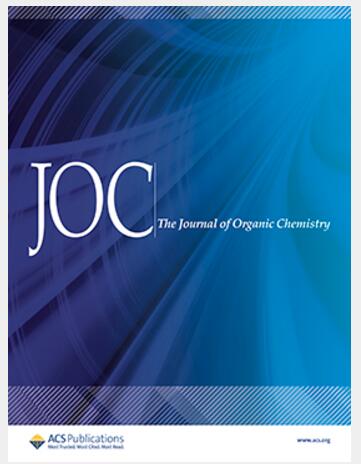以季氟烷基醇为氟烷基化试剂的有机光氧化还原催化森田-贝里斯-希尔曼加合物的氟烷基化。
IF 3.6
2区 化学
Q1 CHEMISTRY, ORGANIC
引用次数: 0
摘要
介绍了以季氟烷基醇为氟烷基化自由基的MBH加合物的光氧化还原氟烷基化反应。该简易方案在温和条件下对一系列含氟烷基的合成烯丙基支架具有良好的官能团耐受性。可见光的不同波长可提供具有不同收率和Z/E选择性的所需产品。在这种转化中提出了一种涉及o中心自由基的自由基途径,该自由基诱导β-断裂形成关键的氟烷基自由基。本文章由计算机程序翻译,如有差异,请以英文原文为准。
Organophotoredox-Catalyzed Fluoroalkylation of Morita-Baylis-Hillman Adducts Using Quaternary Fluoroalkyl Alcohols as the Fluoroalkylating Reagents.
Photoredox-enabled fluoroalkylation of MBH adducts using quaternary fluoroalkyl alcohols as the fluoroalkylating radical reagents is described. The facile protocol displays excellent functional group tolerance toward a series of synthetic allyl scaffolds containing fluoroalkyl groups under mild conditions. The alternative wavelength of visible light delivers the desired product with different yields and Z/E selectivities. A radical pathway involving an O-centered radical that induces β-scission to form the key fluoroalkyl radical is proposed in this transformation.
求助全文
通过发布文献求助,成功后即可免费获取论文全文。
去求助
来源期刊

Journal of Organic Chemistry
化学-有机化学
CiteScore
6.20
自引率
11.10%
发文量
1467
审稿时长
2 months
期刊介绍:
Journal of Organic Chemistry welcomes original contributions of fundamental research in all branches of the theory and practice of organic chemistry. In selecting manuscripts for publication, the editors place emphasis on the quality and novelty of the work, as well as the breadth of interest to the organic chemistry community.
 求助内容:
求助内容: 应助结果提醒方式:
应助结果提醒方式:


